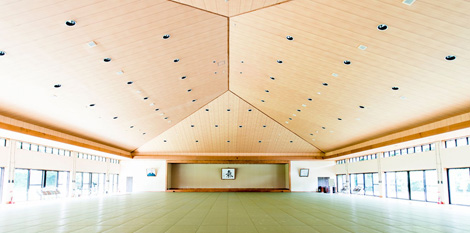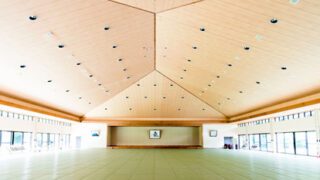Each of us has an important turning point in our life. The most important transformational turning point for me came during my uchideshi training. Because I was aiming to become the successor, my training period was shortened, and it was set to be three years to determine/assess my qualifications, as opposed to the usual ten years.
The agreement was that if I did not “sprout” after three years, I would give up. A period of three years is about 1,000 days, and not a single day could be wasted. I was given the opportunity to be Koichi Tohei Sensei’s otomo, so I was learning his techniques up close, keeping my eyes peeled.
One day, after training, Tohei Sensei said something unexpected to me. “You are [always] staying closest to me, but you don’t seem to be seeing me at all. If you continue like this, you will stay the same no matter how many years you train.”
I was quite perplexed to be told that I am “not seeing anything,” because I was training quite seriously. I couldn’t quite accept what I was told, and I honestly wanted to understand what he meant.
The turning point came suddenly. During practice, Koichi Tohei Sensei saw me colliding with my partner and not being able to throw him, and asked me, “What does the person in front of you mean to you?”
I knew [the answer] in my head. The person in front of me is not an object to be thrown by force, but a human being who can move with me as one, and if I do not create a boundary between us, I can lead him without colliding.
In reality, however, my take on “how to be” was different. To be honest, I was seeing my partner as “an opponent I am going to throw”. Deep down in my heart, I was thinking, “I want to move this person to do what I want.” I was looking very hard at just “how to do”, such as the form and movement of the technique, and I was not looking at it from the perspective of “in what state of mind I should be in to do the technique”.
As I began to pay attention to “how to be”, I realized that Koichi Tohei Sensei was treating people in the same way not only in the dojo, but also in his daily life. It is the posture/ attitude of always working together, without trying to force the other person to move. It is the way/state of “being one”, without drawing a boundary between “myself” and “the other person.”
I understood that, because my way/state of being is conveyed to my partner through my “Ki,” no unconscious resistance is created, so I can lead freely and throw without colliding. I also learned that in order to “Taitoku” (acquire/master) something, it is important to practice this state of “being one” in our daily life.
I was only learning “how to do” and not looking at “how to be”. Because there is a foundation of “how to be”, we can build “how to do” on top of it. If we learn only “how to do”, without “how to be”, we will never be able to master the technique.
In today’s information society, the importance of learning through a [traditional] master-disciple relationship is being questioned. This type of learning might seem pointless because we can get information from the Internet without having to go through the trouble of putting ourselves in complicated and troublesome relationships and spending years in training.
This is certainly true in terms of learning “how to do”. If the content is the same, it might not matter from whom we learn it. And the method [of learning “how to do”] ought to allow us to learn as effectively as possible in the shortest possible time. There is no point in wasting time on unnecessary things.
On the other hand, “how to be” is transmitted from person to person, so who we learn it from is important. It is something that is sensed and learned in each and every move made [by one’s master] in daily life. That is why it was important to spend time with one’s master. I believe that uchideshi training existed for this purpose.
During my uchideshi training, however, I was initially looking at “how to do” only, so it was no surprise that I was told I was “not seeing anything”. Just learning/understanding “how to do” something does not mean we have mastered/embodied it. Even if “how to do” is the same, if “how to be” is different, it will be “similar, but not the same.”
While “how to do” things changes flexibly with the changing times and technological innovations, “how to be” always remains the same. I believe that acquiring and mastering this “how to be” state of “being one” is what we mean by succession. Most importantly, for this reason, I focus upon and value going back to the basics of “how to be”.
Translated by Mayumi Case
Edited by David Shaner
Eastern Ki Federation
https://easternkifederation.org/
Original article in Japanese: やり方とあり方 (Yarikata to Arikata)
April 1, 2025
https://shinichitohei.com/japanese/04-%e3%83%a1%e3%83%bc%e3%83%ab%e3%83%9e%e3%82%ac%e3%82%b8%e3%83%b3/35024/


